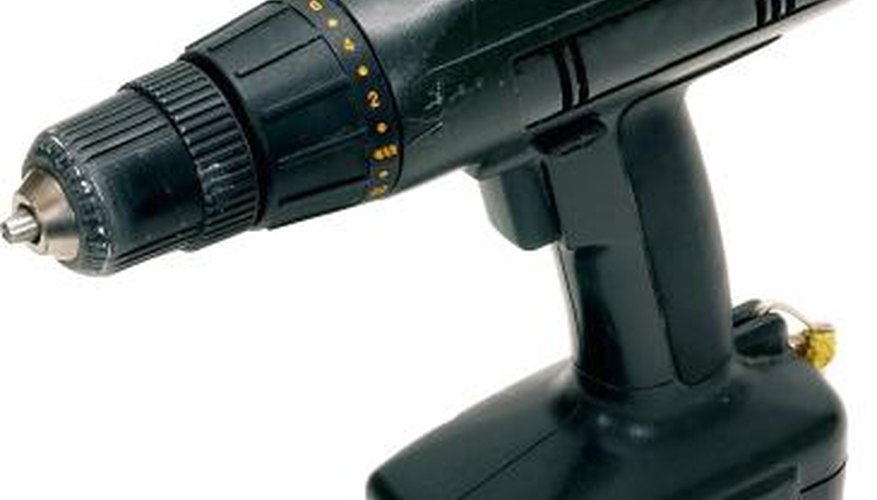Traditional plaster walls are built on a support of lath made from narrow strips of wood ¾ inch by 1¼ inch with gaps between each slat. Plaster is spread on the surface of the lath, forcing plaster between the lath and creating keys (excess plaster) that secure the plaster to the lath support. When the house settles, it can cause a separation between the layer of plaster and the supporting lath, resulting in cracks and soft spots in the wall. To repair the wall, the plaster has to be reattached to the lath using expanding adhesive foam.
- Traditional plaster walls are built on a support of lath made from narrow strips of wood ¾ inch by 1¼ inch with gaps between each slat.
- Plaster is spread on the surface of the lath, forcing plaster between the lath and creating keys (excess plaster) that secure the plaster to the lath support.
Drill a series of holes 1 inch from the crack on both sides of the crack, using a drill with a masonry bit. When you hit a void instead of lath, mark it with a pencil. Do not put expanding adhesive foam in the hole because adhesive foam in a void will not bind the plaster to the lath. Once you find a lath, drill on a level horizontal line and continue to hit a lath.
Vacuum out each hole to clean loose plaster dust and debris.
Hold the spray nozzle against each hole and spray two shots of wall conditioner. Use a damp sponge to wipe away any drips on the wall.
- Vacuum out each hole to clean loose plaster dust and debris.
- Hold the spray nozzle against each hole and spray two shots of wall conditioner.
Insert the nozzle of the adhesive foam tube into a hole on the wall and use a razor knife to mark where to cut the plastic tube nozzle, remove the nozzle from the hole and make a straight cut. Slowly and gently inject adhesive foam into each hole using a caulking gun and one squeeze on the trigger. Wipe away any excess adhesive foam with a damp cloth.
Slowly drill a plastic plaster clamp mounted on a drywall screw into the wall to pull the plaster layer and lath closer together. As you slowly drill the clamp in place, you'll notice adhesive foam coming to the surface of the drilled holes. Stop drilling when you see that happen. Secure the entire patch area with clamps. Let the adhesive foam dry according to the instructions on the label.
Unscrew and remove all the clamps when the adhesive foam is dry. Scrape the wall with a 6-inch putty knife to remove the raised edges from the drilled holes. Fill the holes and voids with joint compound using a putty knife to spread it. Let the wall dry overnight and sand the area lightly. Apply a second coat of joint compound with a putty knife, let it dry, lightly sand the area, wipe the wall down with a clean, dry cloth, and paint.
TIP
Use only a masonry bit when drilling holes because it allows you to drill through plaster but won’t drill through lath.
WARNING
Wear safety glasses to protect your eyes from plaster particles.
